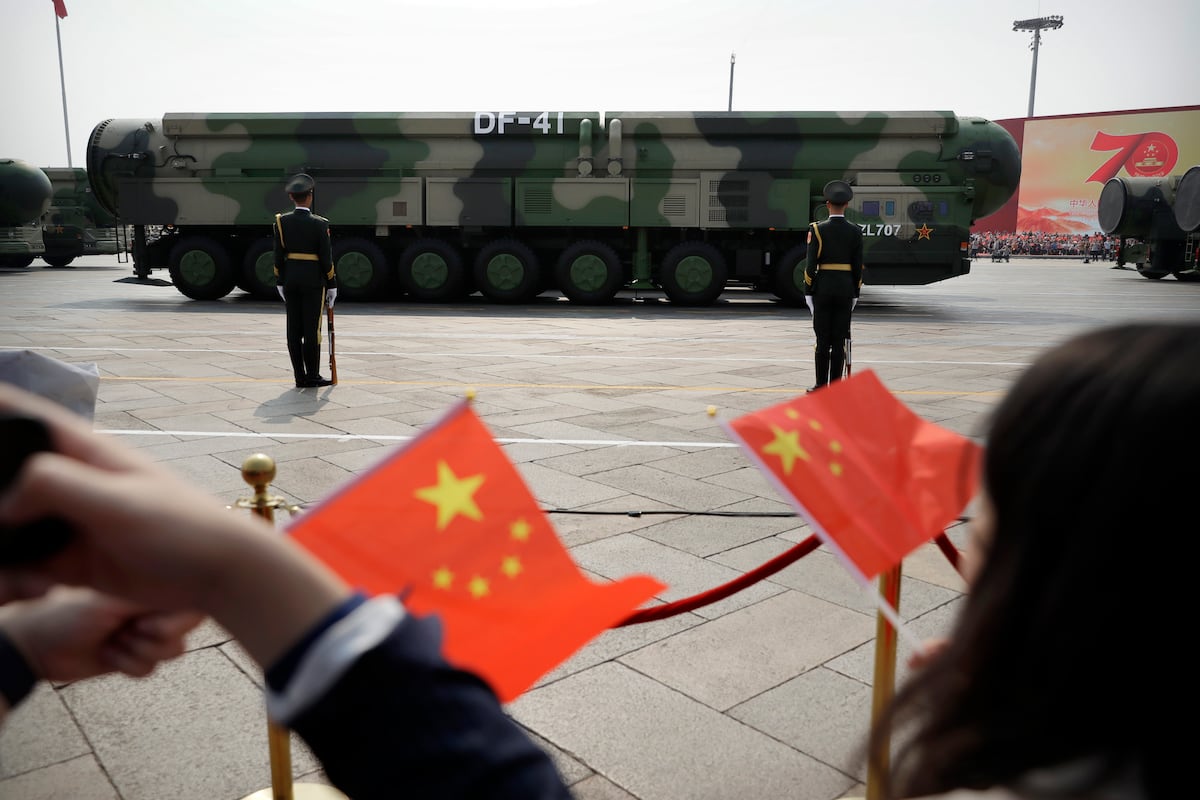Continuing Challenges in ICBM Modernization: A Focus on the Minuteman III
Overview of Current ICBM Landscape
The U.S. Air Force is confronted with a pressing challenge regarding its strategic deterrent capabilities. Delays in the Sentinel program—the replacement for the aging Minuteman III intercontinental ballistic missiles (ICBMs)—could necessitate the continued operation of these missiles beyond their expected life span, potentially extending service until 2050. The Government Accountability Office (GAO) highlighted these critical delays in a recent report, emphasizing the growing risks associated with the transition to the new missile system.
Timeline and Current Status of Minuteman III
Initially anticipated to remain operational only until 2036, the Minuteman III, which forms the land-based segment of the U.S. nuclear triad, may soon face significant operational stress as its condition deteriorates. Currently, 400 Minuteman III missiles are strategically dispersed across approximately 450 silos in several states, including Wyoming, Montana, and North Dakota. However, the age of these ICBMs—some are now over 50 years old—presents multiple maintenance hurdles.
The Replacement Program: Sentinel
Originally, the Sentinel program was budgeted at $77.7 billion, but projections have soared significantly—recent estimates hover around $160 billion, prompting a Nunn-McCurdy breach declaration due to cost overruns. The adoption of ineffective systems engineering, a deficient industrial base for ICBMs, and unrealistic timelines were principal factors contributing to this ballooning cost.
Further complications include:
- The requirement for new silos due to the unserviceable condition of existing Minuteman III facilities.
- A significant pushback on the anticipated delivery timeline, with initial operational capability now postponed beyond 2029.
Operating Legacy Systems: Minuteman III’s Future
Confronted with the delays of the Sentinel program, the Air Force’s Minuteman III program office recently revised its assessment, confirming that it is technically feasible to extend the missile’s operational life for an additional 25 years. This extension, while achievable, comes with considerable challenges.
Maintenance and Sustainment Issues
Extending the life of the Minuteman III through 2050 raises significant sustainment concerns, such as:
- Dwindling supplies of obsolete spare parts.
- The deterioration of critical components, including diodes and capacitors, which are foundational to missile operations.
The aging systems not only complicate routine maintenance but also limit the frequency and scope of essential flight tests required to ensure reliability and deterrent capabilities. The Air Force regularly conducts these unarmed tests as a demonstration of the United States’ nuclear readiness.
Adaptations and Alternatives
As a stopgap measure to enhance capabilities while awaiting Sentinel’s deployment, the Air Force could consider transitioning the remaining Minuteman IIIs to a Multiple Independently Targetable Reentry Vehicle (MIRV) configuration. This adaptation would enable each missile to carry multiple warheads, thereby increasing its effectiveness against multiple targets and sustaining deterrent posture even as the force size may decline.
Strategic Recommendations
In light of the ongoing issues with both the Minuteman III and the Sentinel program, the GAO has advised the Air Force to undertake comprehensive assessments focusing on:
- The operational risks associated with extending the Minuteman III’s service life.
- The logistics and personnel requirements necessary for a transition to a MIRV configuration, should this path be pursued.
The Air Force acknowledged the validity of these recommendations, indicating a proactive approach toward managing the risks inherent in its nuclear deterrent strategy.
Conclusion: A Strategic Imperative
The complexities surrounding the Minuteman III and the Sentinel program reflect broader challenges within U.S. military modernization efforts in the context of strategic deterrence. The intersection of aging systems, ballooning costs, and emerging geopolitical threats necessitates vigilant oversight and innovative thinking to ensure that the U.S. maintains its nuclear capabilities effectively as it navigates through this critical transitional period.
Maintaining a robust and credible nuclear deterrent is not merely a matter of keeping legacy systems operational; it is a strategic imperative that will require careful planning and disciplined execution moving forward.





